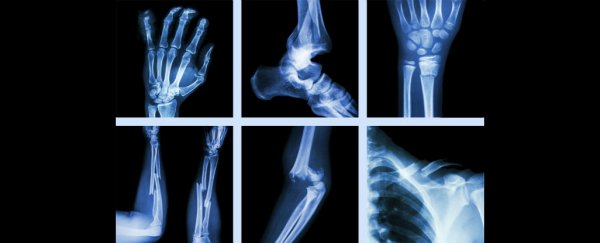Given the intensive labour that was required for early agriculture, it may seem counterintuitive to think farming made us, as an entire species, more fragile. But a new study from the University of Cambridge in the UK has suggested just that.
A team of researchers examining bones from the archaeological record has shown that human bones have become significantly lighter and weaker since the advent of farming, when humans experienced a dramatic lifestyle shift, from constantly foraging to staying in one place.
The study, published last week in the Proceedings of the National Academy of Sciences, showed the bones from human hunter-gatherers from around 7,000 years ago were significantly heavier, and more durable, than the bones of farmers from the same area (the US state of Illinois) more than 6,000 years later.
According to the study, bone mass was around 20 percent higher in our foraging ancestors – comparable to the bones of modern orangutans.
The team has ruled out competing theories accounting for the loss of bone mass, such as changes in diet and body size, and says in a press release that the reduction in physical activity associated with farming was "the root cause of degradation in human bone strength across millennia".
Two types of tissue form bone: the cortical or compact bone is the hard shell that coats the outside, while the trabecular bone is a soft, honeycomb-like mesh structure on the inside. This is the portion of bone most vulnerable to fractures.
The researchers x-rayed samples of human femur (thigh) bones from the archaeological record, along with femora from other primate species, focusing on the inside of the femoral head – a ball at the top of the femur which fits into the pelvis to form the hip joint.
They examined four distinct human populations representing hunter-gatherers and sedentary agriculturalists, and paid particular attention to changes in the trabecular or "soft" bone.
According to the study, within the mesh of the trabecular bones, hunter-gatherers had a much higher amount of actual bone relative to air.
"Trabecular bone has much greater plasticity than other bone, changing shape and direction depending on the loads imposed on it," said co-author Colin Shaw from the University of Cambridge's Phenotypic Adaptability, Variation and Evolution (PAVE) Research Group in the press release.
"In the hunter-gatherer bones, everything was thickened," said Shaw.
Essentially, fierce exertion imposed on bones by hunting and gathering caused minor damage that ultimately caused the bone mesh to grow back thicker and stronger. This, in turn, helped protect bones against age-related deterioration.
The researchers say their findings support the notion that exercise rather than diet is the key to preventing heightened risk of fractures, as well as conditions such as osteoporosis.
"You can absolutely morph even your bones so that they deal with stress and strain more effectively," said Shaw. "Hip fractures, for example, don't have to happen simply because you get older if you build your bone strength up earlier in life."
Interestingly, while the 7,000-year-old foragers had stronger bones than the 700-year-old farmers, Shaw said neither competes with even earlier hominids from around 150,000 years ago.
"Something is going on in the distant past to create bone strength that outguns anything in the last 10,000 years."
Source: EurekAlert
